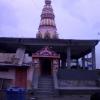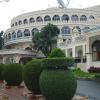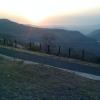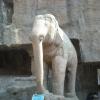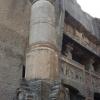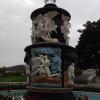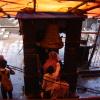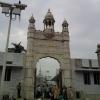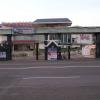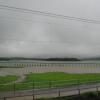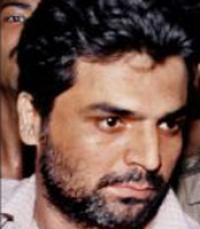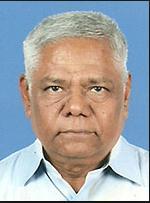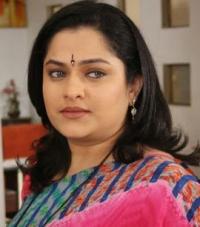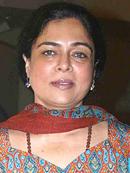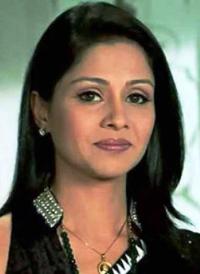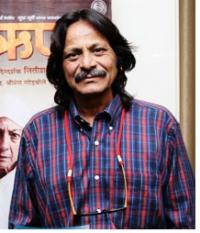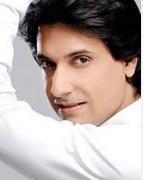Maharashtra is an Indian state situated in the western part of Central India. The capital of Maharashtra is Mumbai which is the largest city in India. This is the richest state in India and ranks second in its population and third in its area among other states of India. The second capital of Maharashtra is Nagpur. Maha means great and Rashtra means nation in Sanskrit. It is also said to have derived its name from the Rashtrakuta dynasty that held supremacy over Deccan region in ancient times.
History of Maharashtra
The Chinese traveler Hiuen Tsang mentioned about Maharashtra in his books. Yadava dynasty held sway in 14th century which was followed by Delhi Sultanate. The rule of Maratha Empire started in 17th century and many wars were fought between Marathas and British. Bombay Presidency came under the governance of the British and later Nagpur, Kolhapur and Satara were annexed to it. After the independence of India, Bombay Presidency was formed in 1950. In 1956, according to the State Reorganization Act, Marathwada region of Hyderabad and Vidarbha region of Central Provinces and Berar were added to it. The state of Maharashtra was carved out of the Bombay State on 1st May 1960.
Geography and Climate of Maharashtra
The state of Maharashtra spreads over an area of 308,000 square kilometers. The state of Maharashtra has Madhya Pradesh to the north, Chhattisgarh to the east, Karnataka to the south, Goa to the southwest, Andhra Pradesh to the southeast and Arabian Sea to the west. The rivers Godavari and Krishna flow through the region. Kalsubai Peak is the highest point in Maharashtra.
Maharashtra has tropical monsoon climate with hot summers from March to June during which the temperature varies between 22 degree Celsius and 39 degree Celsius. The winters are mild with temperature ranging from 12 degree Celsius to 34 degree Celsius.
92 National Parks are located in the state and some of them are Navegaon National Park, Nagzira Wildlife Sanctuary, Tadoba Andhari Tiger Project, Pench National Park, Chandoli National Park, Gugamal National Park, Sanjay Gandhi National Park, Sagareshwar Wildlife Sanctuary, Maldhok Sancutary, Phansad Wildlife Sanctuary and Koyna Wildlife Sanctuary.
Maharashtra State Map With Districts
Maharashtra is divided into six revenue divisions namely Amravati Division, Aurangabad Division, Konkan Division, Nagpur Division, Nashik Division and Pune Division. There are 35 districts in the state as of June 2012 that come under one of these divisions. These districts are further divided into 109 sub divisions and 35 taluks. Given below is the Maharashtra state map with all 35 districts marked.

People and Culture of Maharashtra
As of 2011, the population of Maharashtra is 112,372,972 with a density of 370 people per square kilometer. The sex ratio is 922 females for every 1000 males. Marathi is the official language of the state and other languages spoken here are English, Gujarati, Ahirani, Konkan, Deshi and Varhadi. Hindus, Muslims, Christians, Jains, Christians, Sikhs, Buddhists and Zoroastrians live here.
Ganesh Chaturthi, Gokulashtami, Dasara, Diwali, Eid, Navaratri, Christmas and Maha Shivaratri are celebrated here. People wear different costumes and the cuisine of Maharashtra is characterized by the extravagant usage of pepper and other spices. Mumbai Chaat is one such tasty dish. Povada, Lavani and Koli are the dances of Maharashtra. Dhoti and pheta, choli and sari are the basic costumes of people.
Education in Maharashtra
The total literacy ratio of Maharashtra is 82.9% and ranks 6th among other states of India. There are more than 24 universities, 301 engineering colleges and 616 industrial training institutes in the state. 50% of the total internet users of the country and 45% of the total computers of India are in Maharashtra.
Some of the engineering institutions are Indian Institute of Technology, Visvesvaraya National Institute of Technology, Veermata Jijabai Technological Institute, University Department of Chemical Technology, College of Engineering at Pune, Fergusson College, Walchand College of Engineering at Sangli, etc.
The two important research institutions, the Tata Institute of Fundamental Research and the Bhabha Atomic Research Center are located here. ILS Law College here is one of the top ten law schools in India. Some of the top rated medical colleges such as Armed Forces Medical College and Byramjee Jeejeebhoy Medical College are located here.
Economy of Maharashtra

Maharashtra is the richest state in India that has 15% of the total industrial output of the nation. It is also the second most urbanized state in India. The gross state domestic product in 2010 is 190.31 billion dollars. 42% of the total population of Maharashtra lives in urban areas. The state accounts for more than 40% of the total revenue of India.
Some of the major industrial products are metal, jewelry, wine, pharmaceuticals, engineering products, iron and steel products, plastics and machine tools. The major food crops grown here are mangoes, grapes, bananas, oranges, wheat, rice, jowar, pulses and rice. Major cash crops are cotton, sugarcane, turmeric, groundnut and tobacco.
The Bombay Stock Exchange, the largest of its kind in India and the oldest in Asia is situated here. The IT parks are located at Pune, Mumbai, Navi Mumbai, Nagpur, Nashik and Aurangabad. Maharashtra accounts for the 30% of the total software exports of the country. The busiest port in India is Jawaharlal Nehru Port Trust located in Navi Mumbai. The Chhatrapati Shivaji International Airport in Mumbai is the busiest airport in South Asia.
Mumbai is the center of the largest film industry in the world, Bollywood. Maharashtra is the leading producer of coal based thermal electricity and nuclear electricity generation. Many automobile industries such as Tata Motors, Mahindra & Mahindra, Mercedes-Benz, Audi, Fiat, Volkswagen and Skoda Auto are located in Maharashtra.
Maharashtra Trasportation
Maharashtra has 267,452 kilometers of road which is the largest road network in India. The state is connected with the other parts of India by 17 national highways. The public buses are operated by the Maharashtra State Road Transport Corporation.
The four railways are operated from Maharashtra. Central Railway has its headquarters at Chhatrapati Shivaji Terminus at Mumbai, Western Railway at Churchgate at Mumbai, Nanded division of the South Central Railway at Marathwada and Konkan Railway at CBD Belapur in Navi Mumbai. About 6.4 million passengers use suburban railway networks.
There are three international airports in Maharashtra namely Chhatrapati Shivaji International Airport at Mumbai, Civil Enclave International Airport at Pune and Dr. Babasaheb Ambedkar International Airport at Nagpur. There are many other smaller airports located here at Aurangabad, Nanded, Akola, Solapur, Jalgaon, Kolhapur, Nashik, Osmanabad and Baramati.
Maharashtra has three major ports located at Navi Mumbai and Ratnagiri at Mumbai operated by the Mumbai Port Trust. Apart from them, the state has 53 minor ports. The come under the Maharashtra Maritime Board.
Maharashtra Tourism
Maharashtra ranks first among other Indian states in attracting more number of foreign tourists. This is also the 4th most visited state by the domestic tourists of the country as of 2010. Aurangabad has been announced as the tourism capital of Maharashtra. The tourist activities such as paragliding, gliding, rock climbing, scuba diving, snorkeling, kayaking canoeing, trekking and wild safari attract many people.


